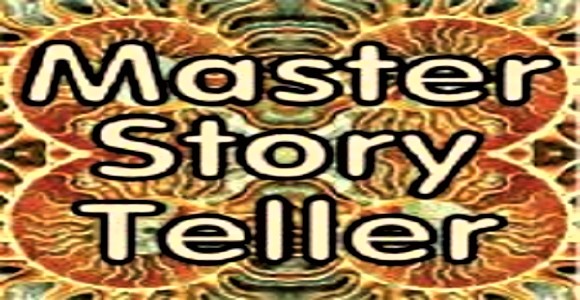
Perhaps the greatest hurdle in writing is the attempt to bring structure to a story without putting your Muse in a straight jacket.
Often structure is brought into the picture too soon, clamping your passion into an iron maiden that pierces it more deeply with every turn of a structural screw until it bleeds out entirely.
In contrast, writing with purposeless abandon creates a jellyfish of a story: an amorphous blob of subject matter with no spine, full of sound and fury, signifying nothing.
The Master Storyteller Method was designed to bring passion and structure together seamlessly, at the right place and the right time in the story development process.
When first starting to write, our ideas usually come fast and furious. Many of them are little snippets: a notion for a line of dialog, a location in which some action will take place, the basic concept for a character, or perhaps a plot twist. Sometimes, we begin with no more than a period of history or a topic or an ethical message that we’d like to explore in our book or screenplay, and the more we think about it, the more ideas we get.
Like the pieces to a jigsaw puzzle, each story concept is separate, and what’s more, we haven’t seen the picture on the box so we don’t even know that we’re trying to build. What we are doing at this stage is developing a Story World – basically a realm of our interests or subject matter that is all of the same basic topic or genre, but really isn’t a story yet.
As the story world becomes more complete, we begin to get a sense of the story we want to tell. In fact, a single Story World can give birth to many different stories, such as with Harry Potter, Anne Rice’s Vampire Saga, and the Star Wars Universe.
The Master Storyteller Method provides techniques developing your story’s world and discovering who’s in it, what happens to them, and what it all means.
Your story world is like a map of the material you’d like to explore. Your story will be the specific path you take across it. Think of your Story World as a beautiful unspoiled landscape, untouched by the hand of man. You are a pioneer who is the first to see that gorgeous valley and your mind envisions a glorious city to be built there that works in harmony with the environment and provides an orderly life for its inhabitants.
You would not do well to have come with a predetermined “most efficient” city plan with all the streets and locations laid out with complete disregard to the terrain – to simply be stamped onto the land. Rather, you should look at the lay of the land and determine where a road can go straight and where it must go around a hill or a stand of trees to retain and even maximize the beauty of the scenic route.
Sometimes, alas, a tunnel must be drilled through a hill as it is the only way to get to a view, or a roadbed cleared through the trees so you can see the forest for them. But more often than not, if the landscape of your story is the guiding organizing property and the structure conforms to it, it will be a far finer city experience in the end.
The Master Storyteller Method gently creates a freeform structure: a means of organizing your story world that is both free and has form.
Eventually, you will have platted out your story city so that all the most impressive landmarks are left unaltered and there is an unbroken pathway that will convey your reader from one to the next until the sum total of your purpose in telling the story can be seen an appreciated.
But before you pave those roads and commit to construction, you’ll want to be sure you have made all the best choices and that no better alternatives have emerged during your efforts to refine and revise your city plan.
What you need is an objective way of double-checking that all the traffic will move smoothly, that the unexpected twists and turns in the road have a reason to be laid out that way and that no roads come up short or run into dead ends.
The Master Storyteller Method employs an interactive spot-check for all essential structural points and a guide against which you can compare your story-plan to see where and how far you may have diverged from a consistent structure.
Keep in mind that no structure has to be perfect in a finished work. Still, you’ll want your structure to be as sound as possible without undermining the very concepts that drew you to want to write this particular story in the first place. In the end, it is a judgment call for the author as to whether drifting off structure does too much harm or is okay in any given case.
The main point is that that no one reads a book or goes to a movie to experience a perfect structure but rather to have their passions ignited. So if it comes to a choice between an exciting thing and a structural thing, go with the excitement whenever you can, but be sure never to break structure completely or your readers or audience will not be able to cross that gap and will cease to follow you on your journey.
The Master Storyteller Method is at the core of the StoryWeaver story development software I designed to help authors get from concept to completion of their novels or screenplays, step by step.
Melanie Anne Phillips
Creator, StoryWeaver



 We all know that a story needs a sound structure. But no one reads a book or goes to a movie to enjoy a good structure. And no author writes because he or she is driven to create a great structure. Rather, audiences and authors come to opposite sides of a story because of their passions – the author driven to express his or hers, and the audience hoping to ignite its own.
We all know that a story needs a sound structure. But no one reads a book or goes to a movie to enjoy a good structure. And no author writes because he or she is driven to create a great structure. Rather, audiences and authors come to opposite sides of a story because of their passions – the author driven to express his or hers, and the audience hoping to ignite its own.
You must be logged in to post a comment.